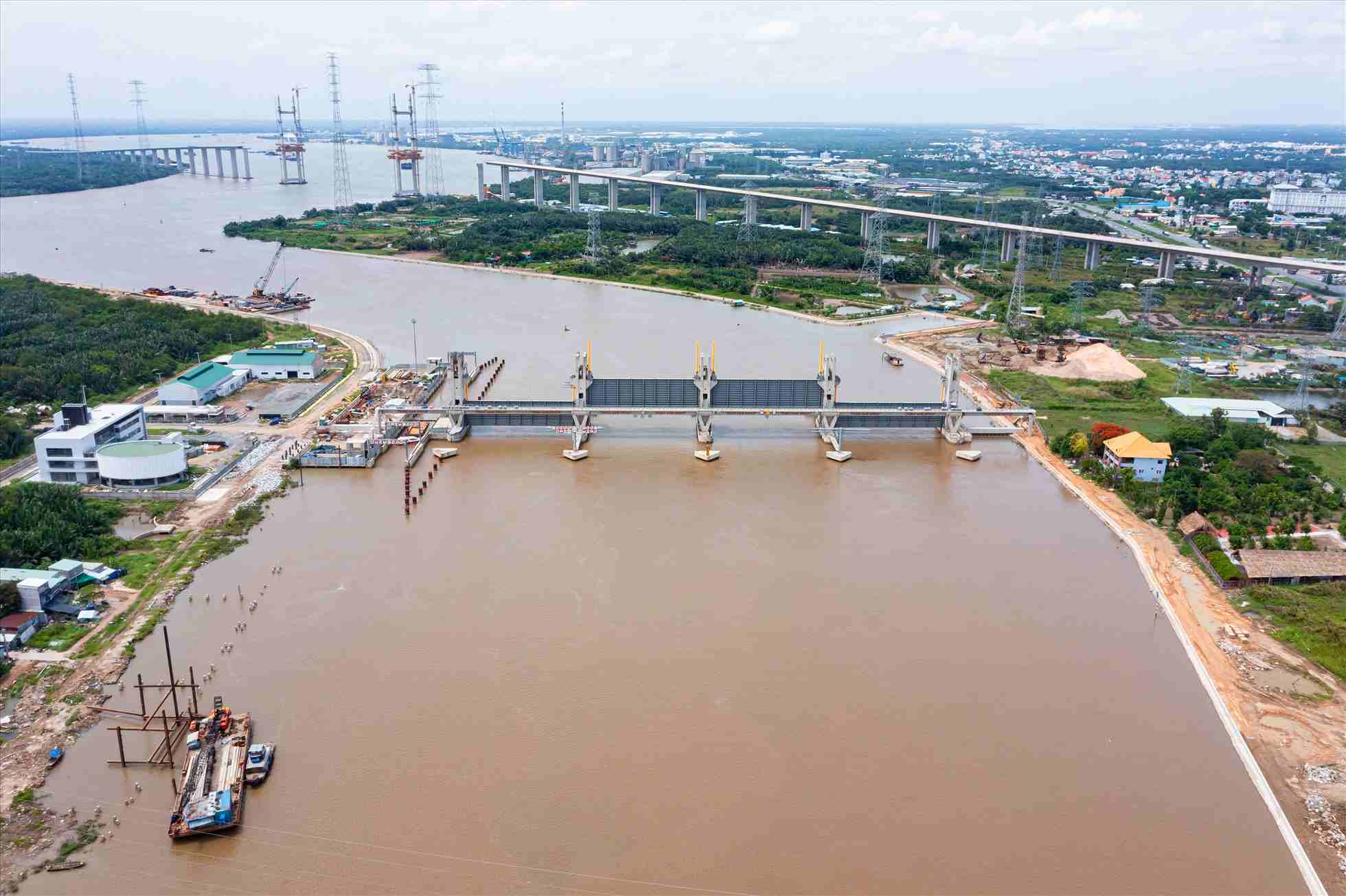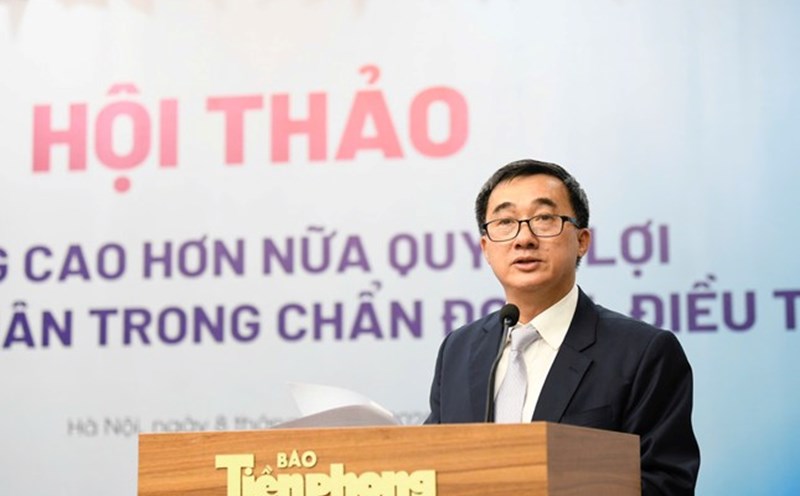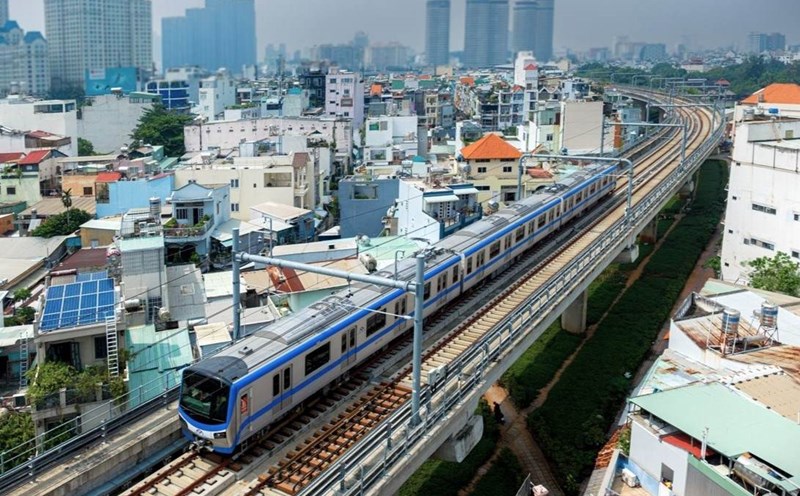The project is stalled, causing tens of billions of VND in loan interest
Started in 2016 with an investment capital of nearly VND10,000 billion under the BT (build - transfer) form, the tidal flood prevention project in Ho Chi Minh City aims to control flooding in an area of 570km2 with 6.5 million people. Although more than 90% has been completed, the project has been stalled since November 2020 due to payment procedures, resulting in a loan interest of more than 1.7 billion VND/day.
The main problem is the lack of VND1,800 billion to complete because BIDV does not have a basis to sign credit contract appendices. The city once proposed to lend to Ho Chi Minh City Financial Investment Company (HFIC) to investors, but the Ministry of Finance assessed it as not suitable. The project also faces legal barriers when the total investment exceeds VND10,000 billion, which is a national important project criterion, but it is not clear whether the authority to adjust the investment policy is clear.
Similarly, the Ring Road 2 project, Pham Van Dong - Go Dua section, 2.8km long, with a capital of more than VND 2,700 billion, started in 2017 under the BT form, expected to be completed in 2020. However, due to problems in adjusting, signing contract appendices and paying land funds to investors, the project stopped construction in March 2020 when it had only reached 44%.
In early 2024, the Ho Chi Minh City People's Committee approved an adjustment and delayed the progress to 2026, but so far the problems have not been resolved, causing the project to not be able to be restarted. The investor - Van Phu Bac Ai Company - has spent more than VND 1,474 billion (excluding interest), with interest expenses arising at about VND 15 billion/month.
Meanwhile, the Saigon Centre project at 92-94 Nam Ky Khoi Nghia (District 1), licensed in 1993, is divided into 5 phases. Currently, Saigon Centre 1, 2, 3 have been completed, while the remaining two projects - Saigon Centre 4 (3.376m2) and 5 (5.247m2) have not yet been implemented. The investor of these two projects is Keppel Land Watco 4 and 5 Co., Ltd., under Keppel Land.
Up to now, Saigon Centre IV has compensated nearly 76% of the area, but both projects are still in the site clearance phase. The investor proposed that the Ministry of Planning and Investment adjust the progress, complete the construction within 60 months from receiving the land, and at the same time extend the operating period to 50 years from the handover date.
For the 7/5 Residential Area project (Long Thanh My ward, Thu Duc city), it has been implemented since 2003 according to the policy of relocating the shooting range to create land to build a residential area.
The Ho Chi Minh City People's Committee was assigned to manage 32.13 hectares of defense land and temporarily assigned 7/5 One Member Co., Ltd. under the Ministry of National Defense for investment. In 2015, after the enterprise dissolved, the project was transferred to A Sung Company Limited. The new investor has completed the necessary legal procedures, including land use registration, land rental payment and was granted a land use right certificate in 2016. However, in 2018, the Ministry of Natural Resources and Environment conducted an inspection of compliance with land laws at the project. Up to now, there has been no inspection conclusion, causing the project to not be able to continue implementation even though the implementation deadline has passed.

Speed up the removal of obstacles
With a VND10,000 billion flood prevention project, Ho Chi Minh City has reported to the Prime Minister, recommending adjusting the investment policy to have a basis for signing a new contract, and at the same time recommending the State Bank to extend refinancing and restructuring debt for investors. The city also requested to use 3 plots of land for payment, and at the same time proposed to pay VND3,000 billion in advance that has been audited to speed up progress and reduce interest costs.
On the Ho Chi Minh City side, Chairman of the Ho Chi Minh City People's Committee Phan Van Mai assigned the Department of Planning and Investment to prepare documents to develop a Government Resolution on removing difficulties for the project, establish an Appraisal Council and select a consulting unit. This Department was also assigned to negotiate and sign the BT contract appendix, proposing to the budget capital management unit to ensure the project was completed before December 31, 2025. The Ho Chi Minh City People's Committee assigned the Department of Natural Resources and Environment to coordinate in developing a detailed 1/500 plan for the land plots to pay, hire a unit to appraise prices and complete before May 31, 2025.
For the Ring Road 2 project, the project BT contract was signed in 2016, regulating the use of 6 land plots to pay investors. However, because these lands were not included in the feasibility study report, the project encountered legal problems.
In 2019, the State Audit requested Ho Chi Minh City to review, adjust the total investment capital and complete related legal procedures. To ensure payment, the project needs to add these contents to the feasibility study report. However, according to the law, the Ho Chi Minh City People's Committee does not have the authority to appraise and approve these adjustments.
The city has reported to the Prime Minister, proposing to allow self-implementation of procedures for adjusting feasibility studies reports, including financial plans, to remove obstacles.
For the 7/5 Residential Area project, the Ho Chi Minh City People's Committee proposed that the Prime Minister allow A Sung Company to continue implementing the project after the inspection conclusion. The city will carry out 5 procedures: Extension of land use period for 24 months, adjustment of planning, land allocation according to the area of cleared land, resettlement of land prices, receipt of land funds for social housing construction and settlement of complaints of 24 households.
In addition to supervising investors, the Ho Chi Minh City People's Committee will review individual and collective responsibilities related to legal errors.











